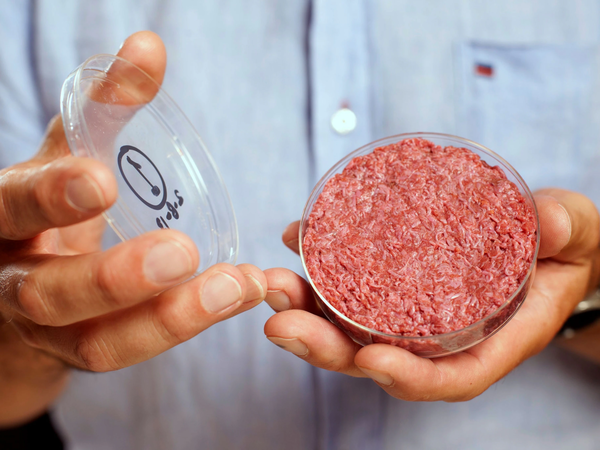With the rapid advancement of technology, revolutionary yet controversial innovations have emerged in the field of biotechnology, cultivated meat being one of them. In this month’s Debate, we explore the question of cultivated meat: is it the future of meat production, or is it a misguided application of technology?
Unlike conventional methods that involve raising and slaughtering animals for meat, cultivated meat is created by cultivating animal cells in a controlled environment. The process typically begins with the extraction of a small sample of cells from an animal, such as muscle cells. These cells are then placed in a nutrient-rich culture medium that allows them to multiply and develop into muscle tissue, replicating the natural growth process without the need to raise and slaughter the entire animal.

Cultivated meat offers a key environmental advantage by potentially significantly reducing the ecological footprint of meat production, addressing the substantial environmental burden associated with traditional livestock farming. According to a study published in Science, a staggering 26% of Earth's total land area is dedicated to sustaining the vast number of animals raised for food. Additionally, a paper on The National Center for Biotechnology Information states that livestock farming is also a significant contributor to water scarcity, accounting for 27% of global freshwater consumption. Moreover, the meat industry is responsible for a considerable portion of greenhouse gas emissions, contributing to climate change. A shift to cultivated meat could alleviate these environmental pressures by significantly reducing land use, water consumption, and greenhouse gas emissions associated with conventional agriculture.
The ethical implications of conventional meat production are often overlooked. On a global scale, approximately 200 million animals are killed each day, equating to a staggering 74 billion annually. This means that within 1.5 years, humanity slaughters more animals than the total number of people who have ever lived throughout the entire 200,000-year history of our species. The situation is no better even when we take a closer look — the conditions in which animals are raised for meat are often deplorable. Pigs, for instance, are confined to gigantic windowless sheds, deprived of sunlight and a semblance of a natural life. Dairy cows endure continuous breeding cycles to maintain milk supplies. Chick culling is the process of killing male and unhealthy female chicks. They are either thrown into a large, high-speed blender, gassed to induce unconsciousness, electrocuted, or suffocated. Even within organic farming, the term is elastic. For example, according to EU regulations, an organic hen may still share 1 square meter of space with five others. By eliminating the need for mass animal slaughter and addressing inhumane conditions, cultivated meat offers a more ethical alternative.
Beyond environmental and ethical considerations, cultivated meat also presents health advantages. A significant proportion of antibiotics, up to 80% in the United States, is allocated to livestock because the living conditions of these animals are so packed, making the transmission of diseases very easy. While this addresses short-term concerns, it fuels the development of antibiotic resistance, a critical issue in the long term. Cultivated meat reduces reliance on antibiotics in the production process, offering a healthier option for consumers.
Furthermore, traditional meat production is an inefficient use of resources. Only a fraction of the nutrients from fodder end up in the final meat product. A study by Water Footprint Network revealed that for a mere 1kg of steak, a cow may need to consume up to 25 kg of grain and 15,000 liters of water. While a tremendous amount of resources are needed to produce meat, meat makes up just 18% of the calories humans consume. If we redirect the resources used in livestock farming to direct human consumption, we could potentially feed an additional 3.5 billion people.
In embracing the era of cultivated meat, it is crucial to acknowledge that this innovative approach to food production is still in its infancy. Rather than dismissing cultivated meat as a whole, a thoughtful and balanced approach is needed. Engaging in ongoing dialogue and collaboration among scientists, policymakers, ethicists, and the public will be crucial in shaping the future of cultivated meat. By embracing this technology carefully and with a broad perspective, we can work towards a food system that is not only sustainable and ethical but also adaptable to the evolving needs and values of our society. In doing so, we pave the way for a future where cultivated meat plays a significant role in addressing the challenges of traditional meat production, contributing to a more sustainable and compassionate global food system.

